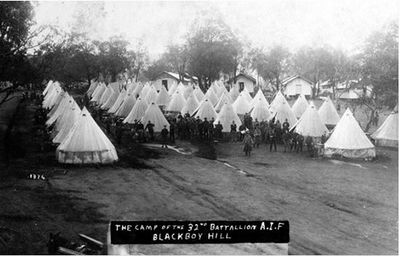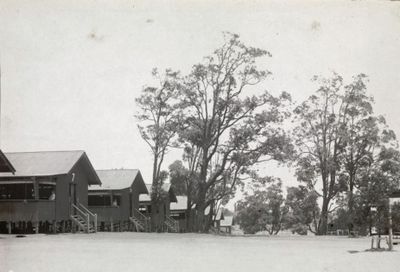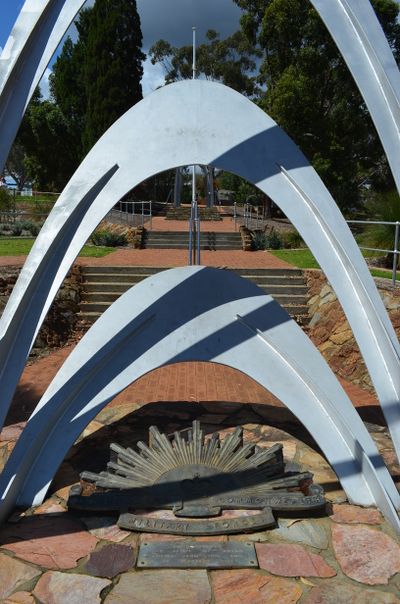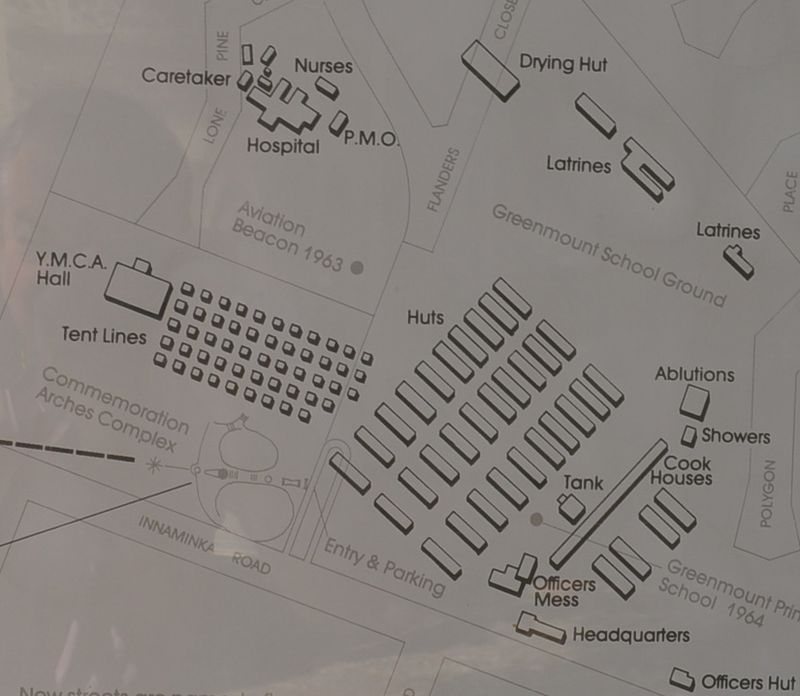Difference between revisions of "Blackboy Hill camp"
From Our Contribution
| Line 19: | Line 19: | ||
<div><ul> | <div><ul> | ||
| − | <li style="display: inline-block;"> [[File:Blackboy_Hill_badge_2.jpg|thumb|none| | + | <li style="display: inline-block;"> [[File:Blackboy_Hill_badge_2.jpg|thumb|none|400px|2014 L. Reynolds photo Blackboy Hill Memorial]] </li> |
| − | <li style="display: inline-block;"> [[File:Blackboy_Hill_plan_1.jpg|thumb|none| | + | <li style="display: inline-block;"> [[File:Blackboy_Hill_plan_1.jpg|thumb|none|800px|Plan of camp]] </li> |
</ul></div> | </ul></div> | ||
Revision as of 20:34, 10 February 2018
 Tents of the 32nd Battalion at Blackboy Hill | |
 Section of the huts at Blackboy Hill SLWA photo b3600172_1 | |
Remarks
The troop build-up for WWI in Western Australia was focused in Blackboy Hill, an area that has now been absorbed into Greenmount on the edge of the Darling Scarp.Over 32,000 men passed through the Blackboy Hill Camp on their way to war.
The first troops marched into Blackboy Hill on 17th August 1914, twelve days after the declaration of war. Western Australia’s 11th Battalion was the first raised in this state, and such was the enthusiasm that there were far more volunteers than were initially needed. As a result, the first 1400 chosen were considered particularly fine specimens of Australian manhood, as were those recruited immediately into the reinforcements, and the beginnings of the 12th and 16th Battalions.
Their initial training was limited, focussing heavily on marching, drilling, musketry practice, and other basic military tasks.
Notes

